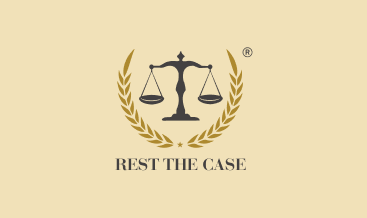Books
REPUBLIC OF RHETORIC: FREE SPEECH AND THE CONSTITUTION OF INDIA BY ABHINAV CHANDRACHUD

The book ‘Republic of Rhetoric: Free Speech and the Constitution of India’ is a commentary on free speech in the present day in clear and straightforward prose. While covering a wide and complicated range of aspects of free speech, the author Abhinav Chandrachud argues that the Constitution of India has made little or no substantive difference to the right to free speech in India. As the book’s narrative balances political history with a reckoning of how this history has shaped the Constitution effectively, the author mentions particular areas of the law that move smoothly and the facts of particular cases that adopted a more general view of the content of the law.
The book can be divided into two parts. While the overview of the book's theme is covered in Chapter 1, Chapters 2 to 6 are predominantly historical and describe the roots of legal guarantees of freedom of speech and the press in India under the British Raj and the Constitution of India. Further, Chapters 7 to 15 examine particular case studies. Chapters 7 and 8 talk about obscenity and Chapter 9 to Chapter 11 throw light on issues such as contempt of court and the sub judice rule. Criminal defamation is dealt with under Chapter 12 while Chapter 13 deals with hate speech. Chapter 14 and Chapter 15 cover insults to national symbols and freedom of the press, respectively. Here, it is pertinent to note that this division is not rigid in any manner. The book does not go too far into technicalities or complex legalese as it analyses the right to free speech with a substantial amount of scholarly and legal research. The author has addressed particular debates and controversies with close attention to detail. Also, the book extensively covers the Lok Sabha debates and archival materials to present a far more comprehensive and nuanced account of the controversies that followed Brij Bhushan and Romesh Thapar. There is a clear narrative running through the entire book and works well for the author’s thesis regarding colonial continuity.
According to the author, free speech is a myth when it comes to India. He proves his point by taking a dig at the high power that compels comedians to censor their talent as it may offend them and also tarnish their image. As the book progresses, the author notes that before India’s independence, there were four exceptions to the right to free speech, namely sedition (and hate speech), obscenity, contempt of court, and defamation. However, not much has changed in the Constitution after independence as well. To throw light on this, the author mentions how prosecutions for sedition that were launched against leaders of the freedom struggle like nationalist Lokmanya Tilak are used to silence students, leaders, and civil rights organizations to this date.
Further, the author narrates how films in India have suffered from the explanation that visual arts have a greater impact on public minds and need to be closely watched. The cuts ordered in the kissing scenes in the James Bond film ‘Spectre’ and the refusal to certify the film ‘Udta Punjab’ are clear examples of how the Censor Board still holds authority in creative art. Furthermore, the government also punished FTV with a ban on its broadcast for 10 days because their late-night program contained ‘female nudity.’ As the narrative progresses, the book explains how free speech is a luxury not just for the man on the street but also for judges. For example, a few high courts expect lawyers to delete their Facebook accounts when they are elevated to the Bench and this clearly is not free speech. Like films, theatres have also been a center for controversies regarding free speech. In the book, there is a reference to the Supreme Court's recent effort to instill ‘constitutional patriotism’ in cinema-goers by stating that an Indian needs to stand up in a theatre for the national anthem to be considered patriotic.
The book’s main concern is the existing state of free speech in India. The author has skillfully employed his remarkable gifts as a chronicler of Indian legal history while writing ‘Republic of rhetoric’. According to the author, what one man considers a work of art another may consider it obscene and fit to be banned. For example, Vladamir Nabokov’s ‘Lolita’ had Prime Minister Jawaharlal Nehru and Finance Minister Morarji Desai on opposite sides of the culture war. While Desai was of the view that the book about an adult man's relations with an 11-year-old girl was ‘sex perversion’, Nehru intervened and saw to it that the book was not banned in India. ‘Republic of rhetoric’ is a very welcome book with its accessible, engaging, and learned account.




